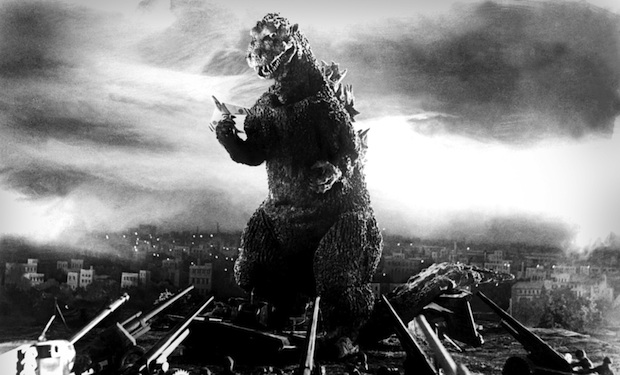Today I am analyzing my own auto-ethnographic account of the South Korean documentary on professional gaming ‘State of Play‘.
Autoethnography as defined by Ellis et al, 2011 refers to the act of observing a cultural experience and discussing how your own personal cultural experiences affect the way in which you experience this.
In my initial autoethnographic account of ‘State of Play’, I was left dumbfounded at some of the situations exhibited in the documentary. This included the huge amount of fame given to professional gamers, these gamers then giving the majority of their ridiculously high earnings to their parents and the lack of equality exhibited in gender roles through South Korean society. After the initial shock of these differences wore off, I conducted research into South Korean traditions and values and found many answers to my questions of cultural difference.
Despite only 1% of South Koreans actively identifying as Confucianist today, many of their social values and traditions are based upon Confucianist ideologies. The family is integral in Korean life and the father, being the head of the family is required to provide food, clothing and shelter and must approve of any marriages of members of the family. Many families trace back their ancestry through male ancestors for over 500 years and Confucius’s teachings denote how individuals should behave and outlines obligations of people depending on their relationship.(Commisceo Global, 2016)
Further children in Korean society are raised to believe they can never repay their parents for bringing them up and are forever in their debt. As the act of bringing them into the world and giving them life is seen as the ultimate self-sacrifice.(Commisceo Global, 2016)
Now how does all this relate?
The cultural values exhibited in Korean society and their values bring light to a lot of the things Lee Jae Dong did in the documentary ‘State of Play’ which confused me in my initial viewing.
For example, I was thoroughly perplexed and mildly pissed off when Lee Jae Dong’s exclaimed that he gave all of his winnings to his father. Growing up in capitalist Australia my initial reaction was to accuse the father of stealing and question his use of emotional manipulation tactics. However, upon research and reflection, as Korean society places the family’s welfare above that of the individual’s, and Korean children are raised in debt of their parents by Confucian tradition, this act made sense. Despite the fact my upbringing still makes me view this as ridiculously unfair.
Another aspect of confusion for me was the very structured, rather sexist ritual of female fans presenting Lee Jae Dong with gifts after he would play in professional gaming tournaments. Although it appears gift giving has very strict etiquette rules to follow in South Korea. As the female fans admire and respect Lee Jae Dong, and want him to perform well, these gifts signify support and love from the fans. Some of the etiquette rules to follow include handing over the gift with both hands, wrapping it nicely (a gift wrapped untidily is a sign of disrespect), and giving 4 of something in a gift is considered unlucky where giving 7 of something is lucky. (Commisceo Global, 2016)
The fact that everyone has a specific place in society with rules and obligations they must follow accordingly means the disparity between genders is very large. South Korea ranked 111th out of 136 in the gender equality index. As the documentary highlighted through its significant lack of female professional gamers and immense number of fangirls which I originally found quite alarming, the country has a long way to go for gender equality. (Kim, J Lee J-W, Shin, K 2016)
Just because these social exchanges make sense, doesn’t make them agreeable or right for the me and this seems to be the case for others as there are many feminist groups fighting to raise women’s place in South Korean society. There is a 55% female participation rate in the South Korean labor force compared to the male rate of 77%. South Korea’s importance of raising a good family places immense pressure on mothers, who are primarily responsible for rearing children. Korean workplaces have been found to provide inflexible environments for working mothers and a lack of affordable, convenient and quality child care. (Kim, J Lee J-W, Shin, K 2016)
One of the more extreme branches of these movements is ‘Megalia‘ who have spoken out against, misogyny in South Korea. Their website is a space which has been dubbed by Reddit user ‘SexyMcSexington’ (I know I’m sorry) as the ‘female Korean 4chan‘ which I find is an interesting perspective. The group have been surrounded in controversy as it attempted to ‘mirror’ the misogynistic comments male users would write about females.
However much of the backlash I found was very similar to the backlash against feminism in Western cultures and Megalian’s tactics could be easily compared to ‘Feminazis’ online. Where men would have similar arguments stating that the feminists are worse than misogynists and accuse them of attempting them of suppressing men’s sexual freedom. (Singh, E 2016)
The group have been responsible for shutting down ‘hidden cams’ on the website Ticketmonster, which would film females in situations where they were unaware of being filmed. They lobbied for the removal of misogynistic banners from Hanshin University, donated over 6 million KRW to Aeranwon an NGO which helps single mothers, and most notably has stopped the sale of high concentrate hydrochloric acid which has been used as weapons in hate crimes against women by men. This was all done by lobbying and protesting by the group and are all significant measures which enable better safety and security of South Korean women.
Their logo I absolutely love, it is satiric in nature and alludes to the novel by Gerd Braten Berg, ‘Egalia’s Daughters: A Satire of the Sexes’, where the genders are reversed. So males are at constant risk of sexual assault and it’s considered their fault and women are given the upper hand in society due to their ability to give birth. It also alludes to the constant objectification of women through use of hand gesture used to signify small male genetalia. (Singh, E 2016)

I love that there are feminists fighting for their voices and right to equality in South Korea as there was a very defined divide between genders throughout the documentary. The only females shown were the gamer’s mothers and sisters and then the fan girls whose only purpose seemed to be to worship and offer unyielding support for the players. Which I found very unsettling considering its 2016.
I apologize for going off on a feminist tangent however I feel I didn’t delve enough into the issue in my original autoethnographic account. Through analysis of my original post, I have gained greater understanding of the Korean Culture and the state of society (pun intended) exhibited in the documentary ‘State of Play’ through research and reflection.
- Ellis, C Adams, T E, Bochner, A P 2011, ‘Authoethnography: An Overview’, Qualitative Social Research, vol. 12, no. 1
- Commisceo Global, 2016 A Look at South Korean Language, Culture, Customs and Etiquette, viewed 19 August 2016, <http://www.commisceo-global.com/country-guides/south-korea-guide>
- Kim, J Lee J-W, Shin, K 2016, ‘Impact of Gender Inequality on the Republic of Korea’s Long Term Economic Growth: An Application of The Theoretical Model of Gender Inequality and Economic Growth’, ADB Economics Working Paper Series, no. 473, viewed 19 August 2016, <http://www.adb.org/sites/default/files/publication/179689/ewp-473.pdf>
- SexyMcSexington, 2016, South Korea’s Radical feminism community wrote about what they want to do to South Korean Men, Reddit, July 2016, viewed 19 August 2016 <https://www.reddit.com/r/KotakuInAction/comments/4ue4dr/south_koreas_radical_feminism_community_megalia/>
- Singh, E 2016, Megalia: South Korean Feminism Marshals the Power of the Internet, Korea Expose, 29 July, viewed 19 August 2016 <http://www.koreaexpose.com/in-depth/megalia-south-korean-feminism-marshals-the-power-of-the-internet/>
- Witness, 2015, State of Play, Al Jazeera, 18 November, viewed 30 August 2016, <http://www.aljazeera.com/programmes/witness/2015/11/state-play-151118095603942.html>











